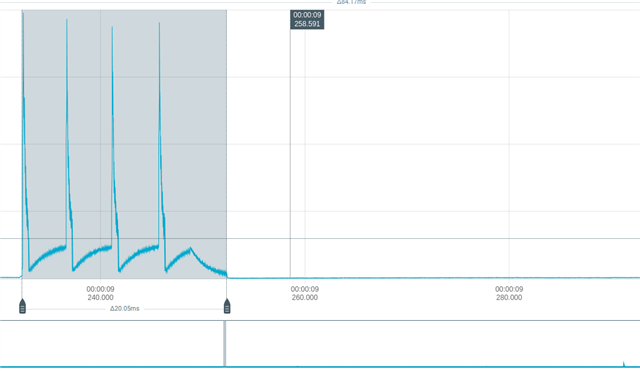Hi,
Im using a custom NRF52811 board and on this board we are using the internal RC as LFCLK source. I have a single thread that sleeps every 10 seconds, so during 10 seconds the system is sleeping (consumes more less 1.35 micro amp). However, the wake up time seems to be quite a lot - around 20ms. I attached the power profiling bellow. Any idea how this can be reduced ?
Im using NRF Connect SDK 2.4.3
Thank you!
